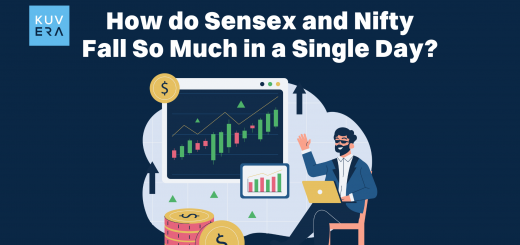VIX to check the market throat?
Yes, the market often seems to cough during market volatility.
The stock market, by its very nature, experiences periods of calm and episodes of intense fluctuation.
For investors, understanding and navigating these volatile times becomes paramount. In India, an important indicator that gauges market sentiment and expected price swings is the India VIX, also known as the Nifty VIX.
This crucial index provides valuable insights into the degree of volatility in the Indian stock market, helping both seasoned traders and long-term investors make informed decisions.
Let us learn what India VIX signifies, how its movements impact investing strategies, and how to approach the market during periods of heightened uncertainty.
What is India VIX?
The India VIX is the Indian equivalent of the Chicago Board Options Exchange’s (CBOE) Volatility Index (VIX), often dubbed the “fear gauge” of the market. It measures the market’s expectation of volatility over the next 30 calendar days for the Nifty 50 index. The National Stock Exchange (NSE) calculates the India VIX based on the prices of Nifty 50 index options. Essentially, it reflects the implied volatility derived from the demand and supply of these options.
A higher India VIX value indicates that market participants anticipate larger and more rapid price movements in the Nifty 50 index. Conversely, a lower India VIX suggests that investors expect more stability and less dramatic price swings. Understanding the India VIX today and reviewing the India VIX chart can offer a snapshot of prevailing market sentiment.
Interpreting the India VIX: What the Numbers Tell You
The India VIX typically moves within a certain range. Under normal market conditions, the index generally fluctuates between 11 and 17.
However, when market uncertainty increases, the India VIX can surge well beyond these levels.
Here is a general interpretation:
- Rising India VIX: A rising India VIX indicates increasing fear and uncertainty among investors. This often correlates with a declining or highly volatile market, as investors seek to protect their portfolios, driving up the demand for protective options. This signifies a higher probability of significant price swings in the Nifty.
- Falling India VIX: A falling India VIX suggests that market participants are becoming more confident, anticipating less volatility. This often coincides with a stable or rising market, as investors are more willing to take on risk.
It is important to note that the relationship between the India VIX and the Nifty 50 index is generally inverse: when the India VIX rises, the Nifty tends to fall, and vice versa. However, this is not an absolute rule, and exceptions can occur during specific events, such as budget announcements or RBI policy decisions, where the market might move in one direction but the Indian market volatility index remains elevated due to anticipated future swings.
Historical Instances of High India VIX and Market Reactions
The India VIX has seen significant spikes during periods of major market stress, providing historical context for understanding current volatility in the Indian stock market.
1. Global Financial Crisis (2008)
During the peak of the 2008 financial crisis, the India VIX reached unprecedented highs, reflecting extreme uncertainty and widespread selling pressure across global markets, including India. The Nifty experienced sharp declines during this period.
2. COVID-19 Pandemic (2020)
In March 2020, as the world grappled with the COVID-19 outbreak and subsequent lockdowns, the India VIX surged to its all-time high. This reflected the immense fear and uncertainty surrounding the pandemic’s economic impact. The Indian market witnessed one of its sharpest corrections during this time, followed by a strong recovery as the VIX gradually declined.
3. Major Geopolitical Events
Historically, significant geopolitical tensions or conflicts have also led to spikes in the India VIX, as such events introduce unpredictable elements into the global economic landscape, causing investors to become cautious.
Observing the India VIX chart during these periods clearly demonstrates how quickly market expectations of volatility can shift in response to major events.
Investing During Times of Market Volatility
Market volatility, as indicated by the India VIX, often presents both challenges and opportunities for investors. While fear can lead to panic selling, a strategic approach can help you navigate these turbulent times effectively.
1. Maintain a Long-Term Perspective
For most investors, short-term market fluctuations, even significant ones, should not derail long-term financial goals. Focus on the fundamental strength of your investments and the overall trajectory of the economy. Trying to time the market based on short-term India VIX movements is often unproductive for long-term investors.
2. Avoid Panic Selling
A high India VIX often correlates with falling markets. Selling your investments during a downturn can lock in losses and prevent you from participating in the eventual recovery. This is a common mistake driven by emotional reactions.
3. Rebalance Your Portfolio
Periods of high volatility in the Indian stock market can cause your portfolio’s asset allocation to drift. Rebalancing involves adjusting your holdings back to your target allocation. This might mean selling some assets that have performed well and buying those that have declined, effectively buying low.
4. Consider Systematic Investment Plans (SIPs)
Continuing or initiating SIPs during volatile periods can be highly beneficial. When the market falls (and India VIX rises), your fixed monthly investment buys more units at a lower price. This strategy, known as rupee-cost averaging, can lead to better average purchase prices over time, potentially enhancing returns when the market recovers.
5. Focus on Quality Stocks
During uncertain times, quality companies with strong fundamentals, healthy balance sheets, and consistent earnings are more likely to weather the storm. Research and invest in businesses that demonstrate resilience.
6. Diversify Your Portfolio
Diversification across different asset classes (equities, debt, gold, real estate), sectors, and geographies can help mitigate risk during volatile periods. A well-diversified portfolio is less susceptible to sharp movements in a single asset class.
7. Explore Defensive Sectors
Certain sectors, such as fast-moving consumer goods (FMCG) and pharmaceuticals, are often considered defensive as they tend to perform relatively well even during economic downturns. These sectors might offer some stability when the overall market, reflected by the India VIX today, is highly volatile.
8. Stay Informed, Not Overwhelmed
You can keep abreast of market news and economic indicators, but avoid constant monitoring, which can lead to anxiety and impulsive decisions.
Wrapping Up
The India VIX, as the Indian market volatility index, serves as a critical barometer for gauging expected market fluctuations. While its spikes often signal periods of fear and uncertainty, they also present opportunities for disciplined investors. The key lies in strategic planning and resisting the urge to make rash decisions driven by fear, allowing you to ride the market waves towards your financial aspirations. Start your commitment with your financial goals with SIP in the Kuvera portal.
Interested in how we think about the markets?
Read more: Zen And The Art Of Investing
Watch here: Learn about the F&O craze in India












